Valve has announced a new Steam Controller, called the Steam Controller, and I’ve given it a go. Valve has given its latest creation the same name as its previous star-crossed product, but this new model is going to be far less divisive than the original. Of that, I am absolutely sure.
The idea behind the Steam Controller is that it allows you to interact with your PC while on your sofa or away from a desk with the accuracy of a mouse, without actually requiring one. This is, and always has been, a good idea. Where people differ is on whether the original manifestation of the Steam Controller, first released in 2015, was any good or not.
I never used it for long enough to get to grips with it—which was, in large part, the problem with it. Some here at PC Gamer own the controller, but rarely, if ever, used it. Others here actively despise it. I imagine that represents a pretty good cross section of the wider PC gaming community. But it’s important to note that there remains a small number of people that argue that it was, in fact, a good controller. It even has a ‘Mostly Positive’ rating on Steam to this day.
The original controller was discontinued around the time it became clear the Steam Machine dream was well and truly over, circa 2019. In its final death throes, it was put on sale for a frightfully low amount of money ($5/£4) and yet still failed to take off. The learning curve deemed too steep; the touchpads too weird; the thumbsticks too few.
This is not a problem with the new Steam Controller. Valve has done the very sensible thing, placing two thumbsticks where you’d expect them to be. Or at the very least, where PlayStation gamers expect them to be, as they are symmetrically placed within equal reach of your thumbs. There’s good reason for this, as beneath each thumbstick sits a touchpad.
The Steam Controller’s two touchpads are nearly identical to the Steam Deck’s, albeit rotated slightly for a more ergonomic design. This is, of course, not a coincidence. The whole idea behind this new version being it allows a user that is docking their Steam Deck to have complete input parity with the handheld. Every layout available to the Steam Deck, each custom control scheme, the Steam Controller can do it too.
“We wanted it to feel familiar, so we targeted input parity with Steam Deck,” Steve Cardinali, an engineer at Valve who worked on the Steam Controller, tells me during my visit to Valve HQ to try it out.
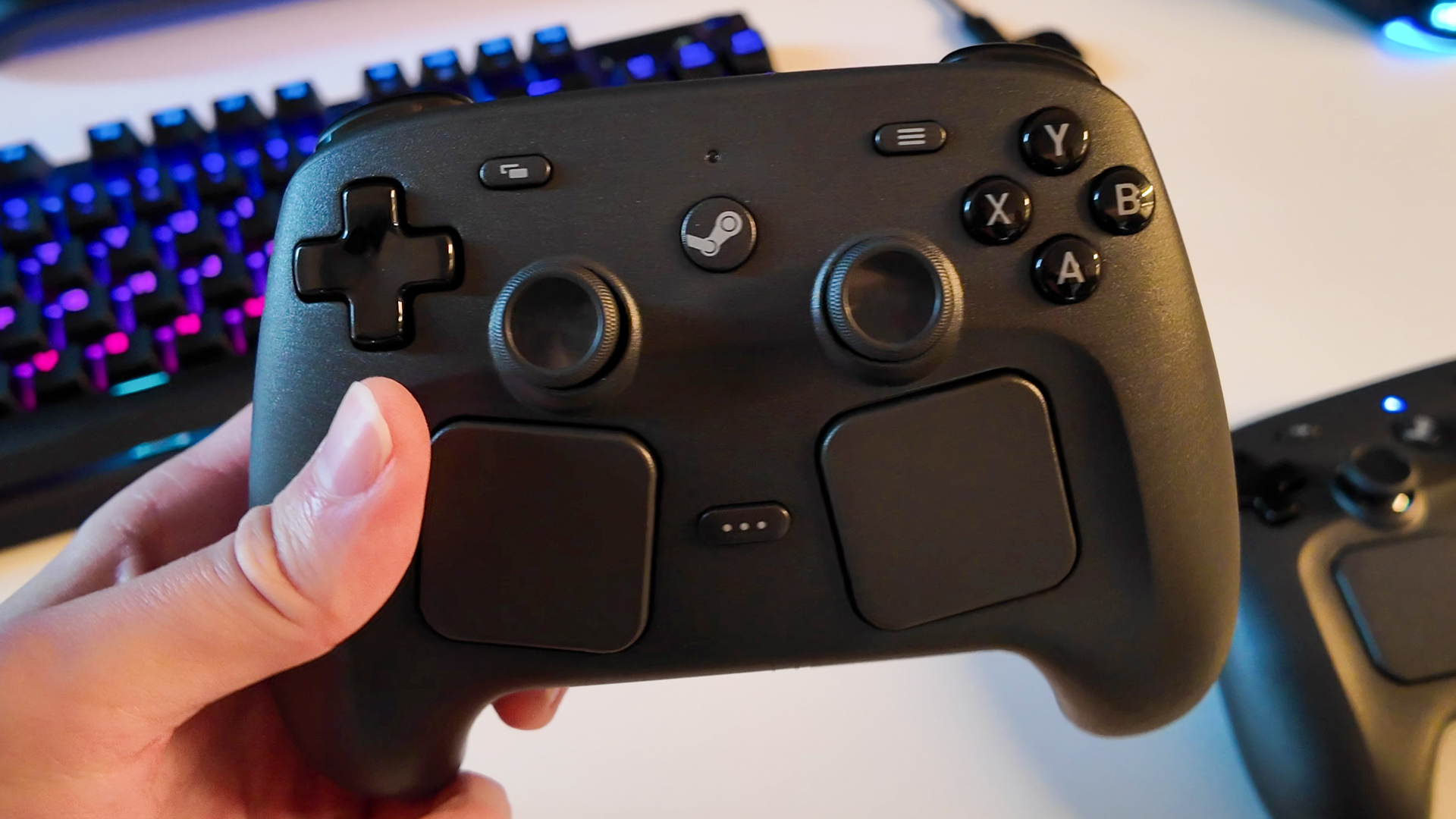
(Image credit: Future)
Steam Controller specifications
Compatibility Windows/Mac/Linux Thumbsticks Tunnel Magnetoresistance (TMR) Connectivity Bluetooth, 2.4 GHz (via Puck or Steam Machine, up to four controllers at once), USB wired Battery life 35 hour+ Extra features Gyro controls w/ grip sense, HD haptics, 2x trackpads, 4x rear grip buttons Release date 2026 Price TBC
“We know that our customers frequently dock their Decks, and they use it pretty much like a console. They just put it up on their big screen, but then they go to sit on their couch and they grab a controller, and all of a sudden they’re lacking all those advanced inputs the Steam Deck has. And we knew that was a problem we needed to fix, and so that, combined with our Steam Controller learnings, led to this new Steam Controller.”
It’s a design that’s been subject to debate for a while, both inside and outside of Valve. Mock-ups posted to Reddit of what a new Steam Controller might look like even got pretty close to the final design post-Steam Deck launch. I guess the writing was on the wall once the handheld improved upon the original idea and got it working for everyone.
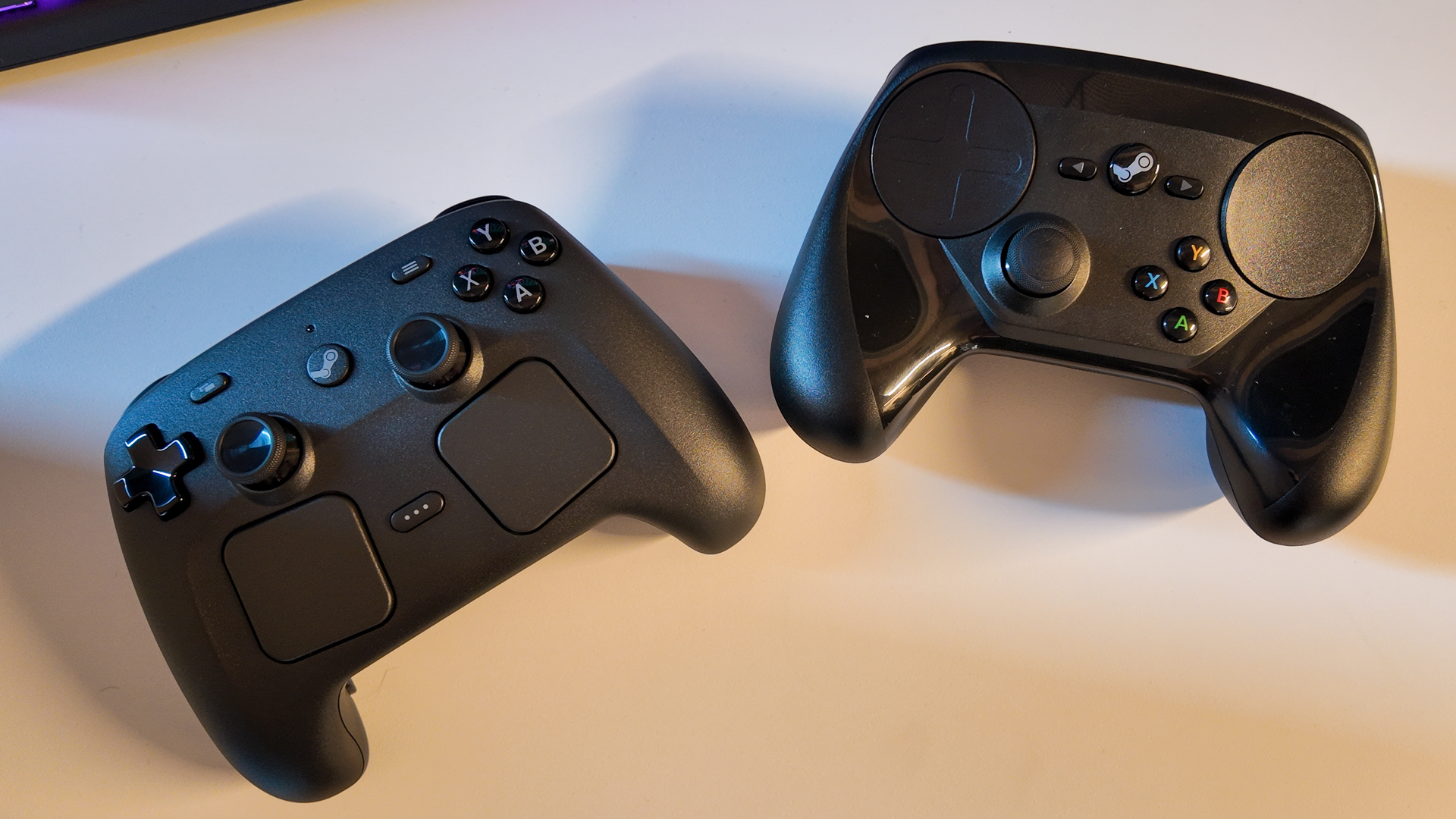
(Image credit: Future)
“We knew we needed to make this controller. We knew how we wanted to lay things out. It took a while to get there and then, as gamers and people who are constantly listening to our community, we also wanted to make sure we added some new features that would excite our customers and ourselves as gamers, and also maybe address some issues that we saw from the field.”
Wireless connectivity is one new feature for the new Steam Controller: Bluetooth and a dedicated, low-latency 2.4 GHz connection via a ‘Puck’ included in the box. This Puck can connect to up to four Steam Controllers at any one time. It also doubles as a charging stand, connecting to the rear of the Steam Controller when you place it down. It can also be charged via the USB Type-C port on the rear.
We targeted input parity with Steam Deck.
Steve Cardinali, Valve
It’s also designed to plug and play with Valve’s latest creation: the Steam Machine. History is truly repeating itself, as the original Controller also launched alongside the original Steam Machines. Though Valve appears in a much better spot to make its Linux-powered living room gaming dream a reality this time around. The Steam Machine features a dedicated antenna for connecting to up to four Steam Controllers, effectively replacing the need for the Puck.
The thing I’m most excited about is the use of Tunnel Magnetoresistance (TMR) thumbsticks. These reduce the risk of stick drift and reduce the required deadzone.
“They’re super responsive, meaning that we’re able to lower the default dead zone by more than half. And super reliable. They’ll keep drift at bay much, much, much longer. These things are super great,” Cardinali says.

(Image credit: Future)
The touchpads have a gentle feedback when used, which is taken care of by the same motors found in the Steam Deck. So, again, that’s the same for Steam Deck users. Though Valve has included even more powerful haptics in the grips here. Cardinali says the availability of more advanced haptic motors these days, able to respond to complex waveforms, helps produce a more immersive and finessed feedback.
One totally new feature for the Steam Controller is gyro aiming—essentially using the entire controller to aim your mouse.
“So there’s a whole community of gamers who really are into gyro aiming,” Cardinali says. “And if you follow what they do, they do all these crazy things all over their controller to enable and disable gyro.”
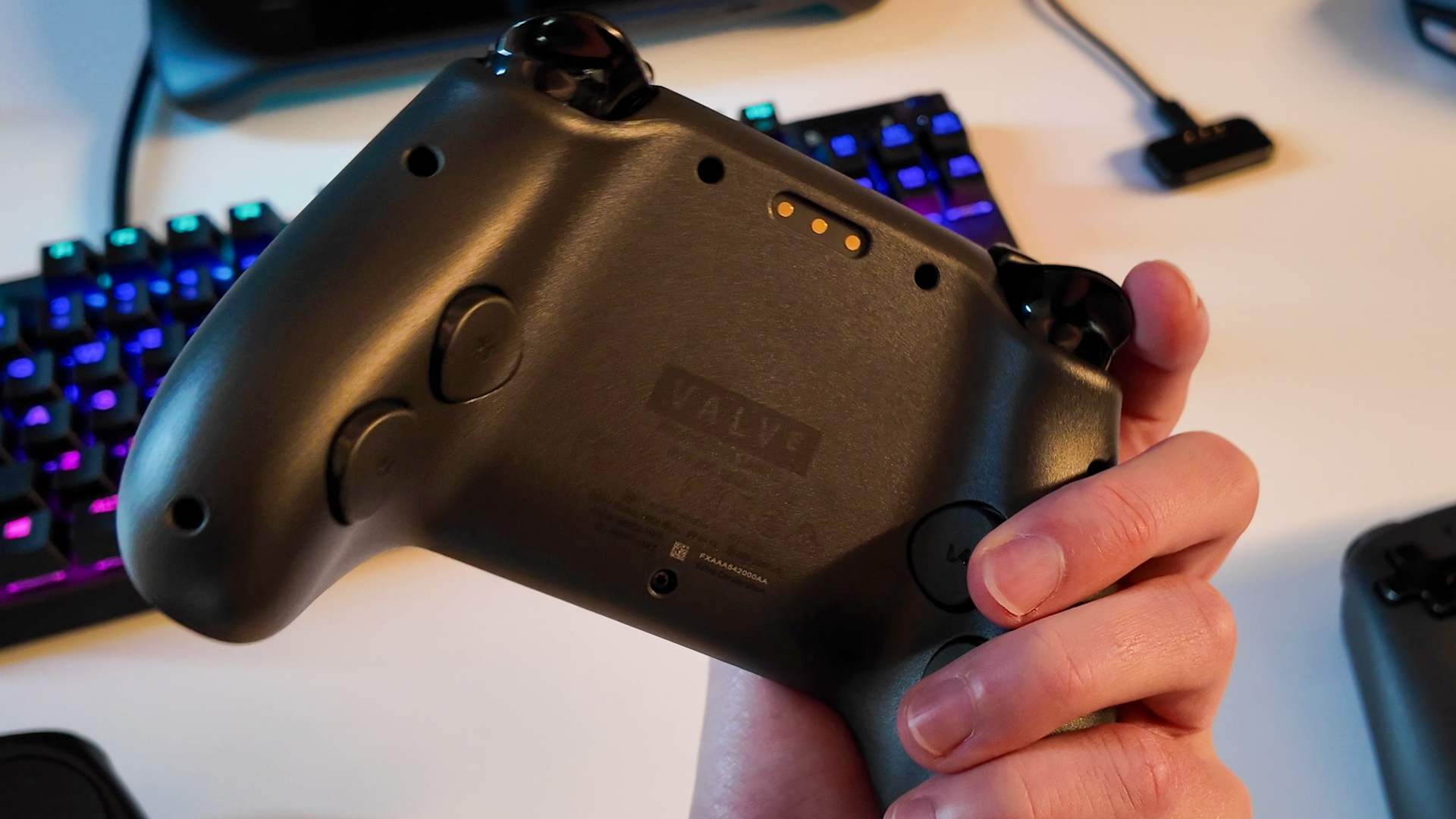
(Image credit: Future)
The Steam Controller supports gyro natively. It even includes a feature to make the controls more usable in practice, essentially sensing when a user is gripping the controller and only enabling gyro controls when they are. It’s a dead man’s switch—when you place the controller on the ground or let it go, it disables the gyro to avoid any odd behaviour.
“So if you’re using gyro and you want to quickly turn it off, you can just flick your fingers open, and then re-grab and you can recenter your gyro. It’s also a full input. Using steam input, you can just map it to whatever you want to.”
What’s more, the story of how gyro aiming came to be in the Steam Controller is what Cardinali calls a “typical Valve story.”
“There’s a guy at Valve who’s super into gyro and the gyro aim community,” Cardinali says. “And when he heard we were working on the controller, he came downstairs and was like, ‘you guys got to add some kind of grip sense for gyro’. He came and moved his desk down by us and sat with us for like, six, eight months or something, and helped us figure out because he’s really in that community. He helped us lay it all out, figure out how it could best help them, and then just recently, he helped do a bunch of software work to help optimise it for us.”
Image 1 of 2
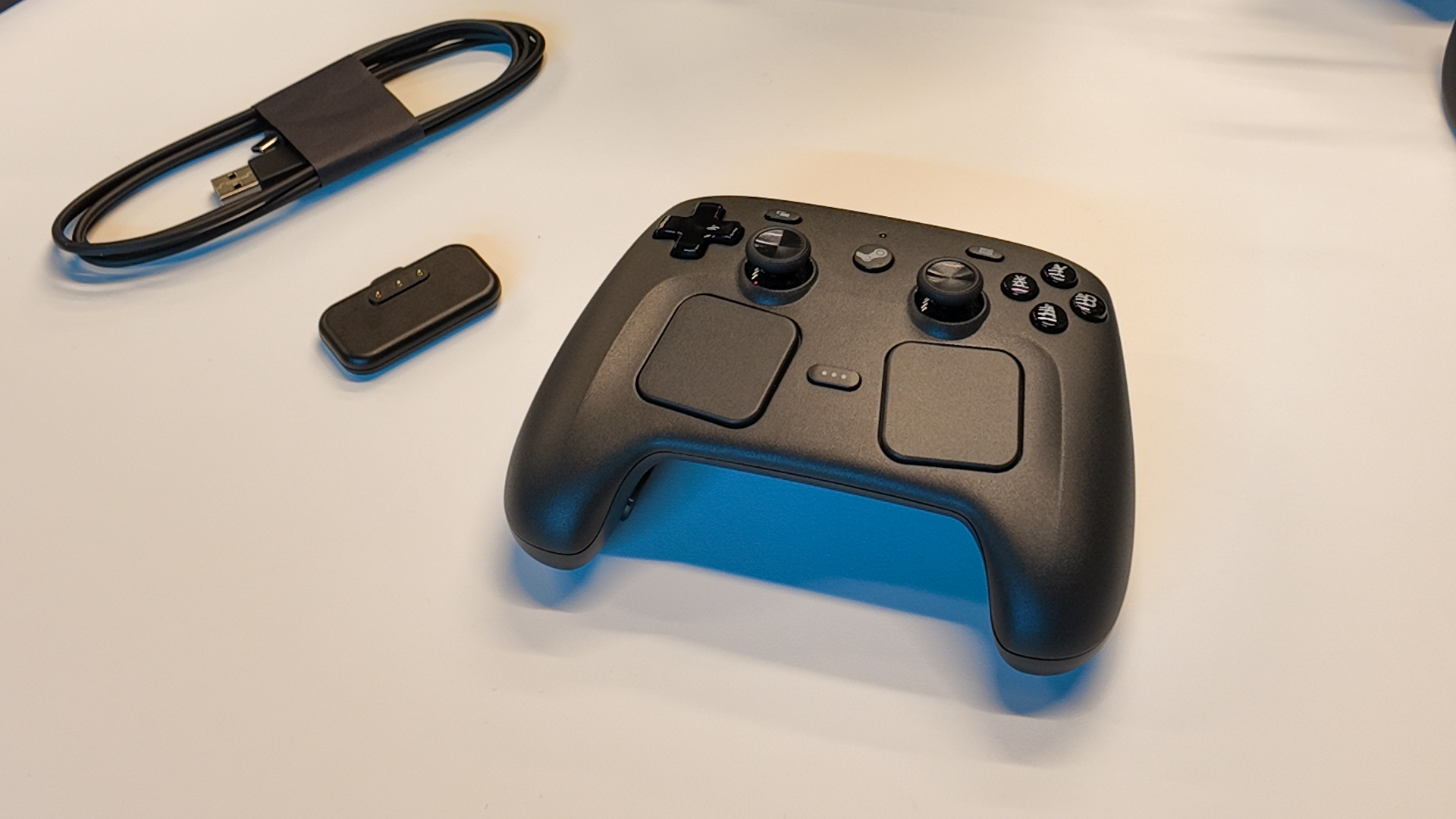
(Image credit: Future)
Image 2 of 2

(Image credit: Future)
I’ve used the new Steam Controller at Valve HQ and I’m glad to report all the buttons are in the right place. It feels comfortable, easy to use, and importantly, there’s no learning curve. It’s made from that same black plastic that anyone who has used modern Valve hardware will recognise. It doesn’t feel cheap, certainly not as cheap as the original controller, but it doesn’t feel high-end, either. I’m hopeful this means a reasonable price tag—$5 might be pushing it, but affordable to match the Deck nevertheless.
Even the gyro controls, which I was apprehensive about at first, are fairly easy to master. Or at the very least, use somewhat competently. I tried the controller out in Balatro, a game that works just as well via controller as it does a mouse, and you truly have the flexibility to use whichever input method feels right for you in the moment. They all work really rather well.
The Steam Controller will be available to buy sometime next year, for a price not yet disclosed. We do know, however, that it will be on sale anywhere you can officially buy a Steam Deck today, including countries in Asia, where it is available through official distributor Komodo.
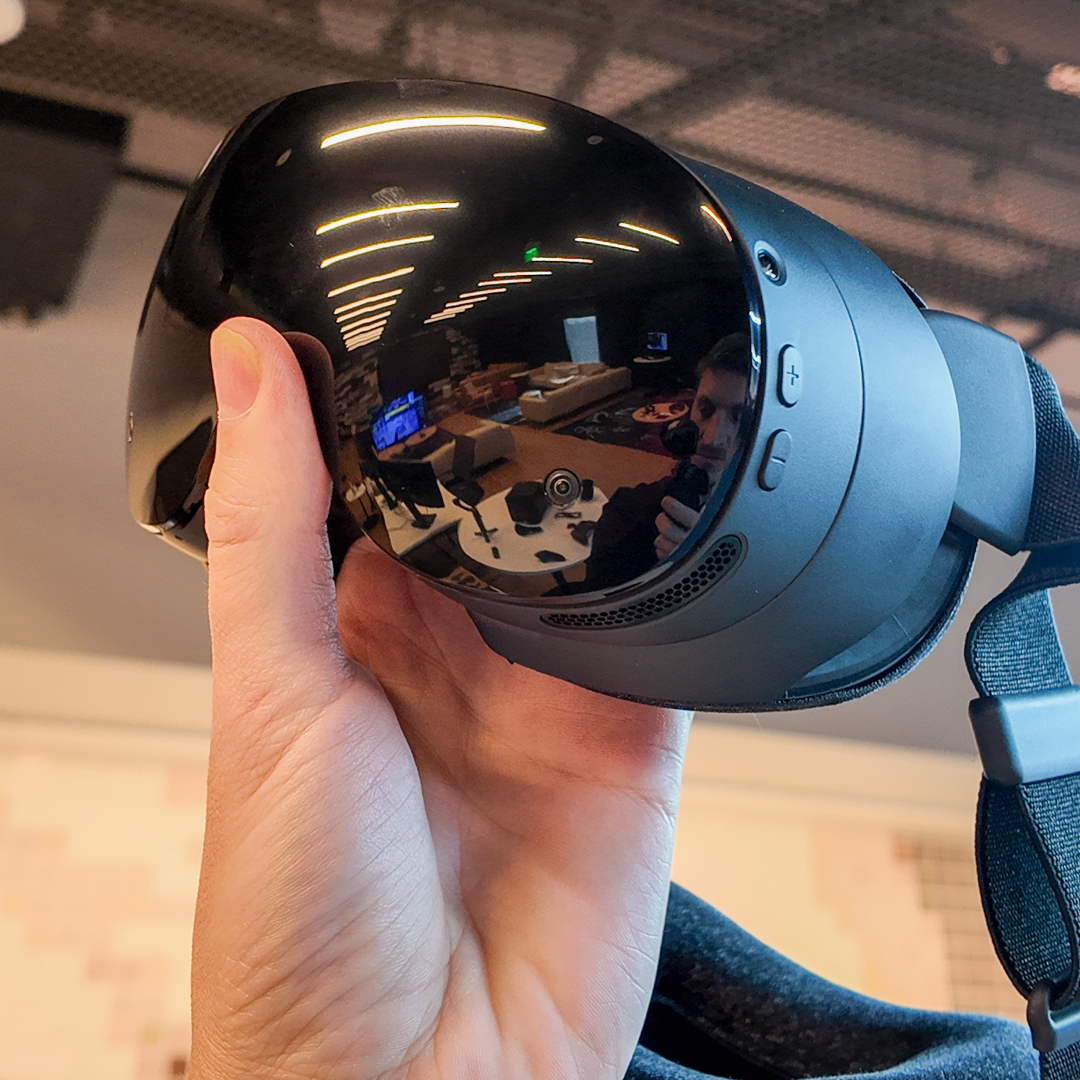
Steam Frame: Valve’s new wireless VR headsetSteam Machine: Compact living room gaming boxSteam Controller: A controller to replace your mouseView Deal
From PCGamer latest via this RSS feed


